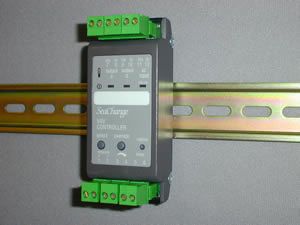Feature |
Configuration Tables |
Data Sheet |
Wiring and Applications |
History |
Feature Notes |
Datasheet |
|
|
VAV Controller |
Latest released version is 4c3Document last updated 01/11/2001 |
VAV / DIN / AOP /... |
Main FeaturesControls VAV Terminal UnitsWorks in conjunction with Belimo “Compact” Volume controllerControls a reheat battery (if fitted)Local User Interface or Actual Volume monitoring options |
 |
FRPT = 0 |
No action (default) |
FRPT = 1 |
Heating output to 50% |
FRPT = 2 |
Heating output to 50% and pump/fan enabled |
INMD = 0 |
Normal operation, input not used on /001 variant (/002 variant uses input for 0-10Vdc Actual Volume) |
INMD = 1 |
Occupied is External AND normal occupation (window contact) (/001 variant only) |
INMD = 2 |
Occupied is External OR normal occupation (outside normal hours) (/001 variant only) |
INMD = 3 |
Occupation controlled by External signal only (/001 variant only) |
INMD = 4 |
Input used as an external alarm, alarm state defined by ALST (/001 variant only) |
NOAL |
No Alarms. |
SENF |
Sensor Failed (only sent if SPTY = 0 or 1) |
EXTN |
External alarm generated by VFC input (/001 version only) |
STOP |
System STOP alarm received. |
Option |
Output A |
Output B |
Input 3-4 |
/ 001 |
Reheat Battery 0-10v DC (optional) |
Desired Volume 0-10v DC |
Setpoint / VFC status / alarm / occupancy |
/ 002 |
Reheat Battery 0-10v DC (optional) |
Desired Volume 0-10v DC |
0 - 10V DC input for actual volume signal from Belimo controller |
Input Configuration |
|
Input 3-4 |
See options table |
Input 5-6‘temp’ |
Temp Sensor (optional) |